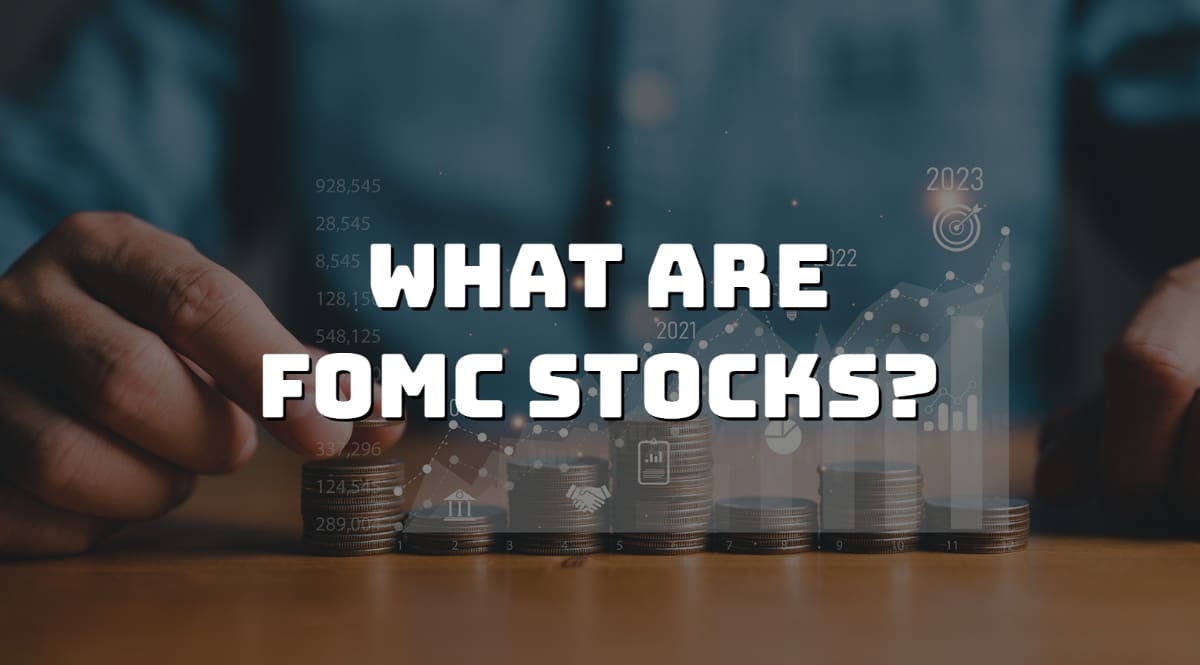
What are FOMC Stocks: Price, News & Outcome – Full Info
Have you thought about what form means in stocks and why professionals in this industry must know about the term? How essential is that unusual name on the stock market, and what does it all refer to?
Primarily, FOMC is an abbreviation of the name “Federal Open Market Committee”, and as the name itself indicates, it refers to a specific branch in the Federal Reserve System.
For those completely uninitiated, the U.S. Federal Reserve represents the United States Central Bank and has a significant role in the country’s overall economy.
But before we get to the central bank and spread this helpful story, let’s first find out what FOMC stands for in trading stocks and all the important information about it, shall we?
Also, in the following article, in addition to the FOMC stocks, you will get the latest news on this topic. Therefore, let’s start from the beginning!
What Is the FOMC Stocks Meaning?

The Federal Open Market Committee, better known as FOMC, refers to an integral arm of the FRS, which represents the famous Federal Reserve System. It steers the course of monetary or expansionary policy within the USA by managing OMOs, which are “Open Market Operations”.
The Federal Open Market Committee consists of numerous board members, including the president of the Federal Reserve Bank of New York.
Furthermore, the other four seats are filled by alternating presidents from the remaining 11 Reserve Banks. Their collective wisdom and leadership steer the course of the committee’s operations.
So, this important committee has 12 people. The committee is made up of 12 people. Seven of them are from the Board of Governors.
Decoding The FOMC
The FOMC, consisting of 12 members, convenes eight times per year in scheduled meetings to consider potential adjustments to imminent monetary policy.
Votes are able to result in buying or selling U.S. government securities designed to encourage steady economic growth.
Its members fall into the three following categories very frequently:
- Hawks prefer tighter strategies
- Doves advocating stimulus
- Moderate centrists
Jerome Powell, regarded as a moderate, is the chair of the FOMC and the Board of Governors, starting his second term on May 23, 2022. The Vice-Chair is John Williams, the Federal Reserve Bank of New York’s President since 2018.
Other key Board members include the following names:
- Michelle Bowman
- Michael Barr
- Lisa Cook
- Philip Jefferson
- Christopher Waller
Federal Reserve’s Role in Economic Management

The Federal Reserve is segmented into 12 districts hosting a district bank in major cities like Boston, Philadelphia, and Richmond.
These banks play key roles in economic and financial decisions, including interest rate adjustments.
While the New York Bank’s president serves consistently, counterparts from other cities, including Boston, Philadelphia, and Richmond, rotate annually. Exceptions are Cleveland and Chicago, where presidents rotate biennially.
What Does the Annual Rotation of FOMC Membership Ensure?
The annual rotation of FOMC membership ensures a balanced representation of distinct geographic groups. Each year, a Reserve Bank president from each of these clusters participates:
- Boston, Philadelphia, and Richmond
- Cleveland and Chicago
- St. Louis, Dallas, and Atlanta
- Kansas City, Minneapolis, and San Francisco
This system promotes equitable input from all U.S. regions. Such inclusivity is crucial for deciding on economic measures, such as federal funds and discount rates, which greatly influence price stability. The current list of FOMC members maintains this balance.
FOMC Meetings: Deciding Economic Direction
The FOMC conducts eight private, scheduled meetings yearly, more if required. These provoke Wall Street speculation about adjustments to the money supply and interest rates. The FOMC minutes, released post-meeting, share outcomes such as changes to interest rates.
The Board of Governors and 12 Reserve Bank presidents evaluate financial markets and economic forecasts in these meetings, discussing the most suitable monetary policy.
Only selected FOMC members finalize the policy. For instance, in July 2023, they raised the fed funds rate between 5.25% and 5.50%, a 25 basis-point increase from May 2023.
The Mechanics of FOMC Operations

The Federal Reserve adjusts the money supply through Open Market Operations (OMOs), modifying the discount rate and setting bank reserve requirements. The FOMC, under the Fed’s purview, handles OMOs—buying and selling government securities.
Acquired securities go into the System Open Market Account (SOMA), which maintains domestic and foreign portfolios. The FOMC can retain or sell these securities as appropriate. The New York Reserve Bank carries out all of the Fed’s open market transactions.
Implementing Policy: The Rotating Basis of FOMC Operations
Post-meeting, the outcomes are relayed to the New York Reserve Bank, which undertakes open market transactions on a rotating yearly basis until the FOMC’s directive is achieved.
In the January 2023 meeting, the FOMC renewed its dedication to fostering maximum employment, price stability, and moderate long-term interest rates. A 2% target inflation rate was identified as most consistent with this year’s mandate.
FOMC News – What Is There to Know About?
Here are some of the latest FOMC news you should be aware of:
U.S. Federal Reserve Raises Benchmark Lending Rate to Tackle Inflation
The U.S. Federal Reserve lifted its famous benchmark lending rate to its highest level since 2001 in response to above-target inflation.
The quarter-percentage-point rise brings the overnight interest rate between 5.25% and 5.5%. The central bank signalled the possibility of more rate increases in the future as it continues to assess economic data.
Key Takeaways from the FOMC Meeting:
- FOMC members unanimously voted to address inflation concerns by raising rates
- More rate hikes are possible, depending on future economic data
- The U.S. economy is no longer forecasted to experience a recession
- Wall Street stocks remained mostly unchanged after the rate hike decision
The Federal Reserve remains vigilant in managing inflation and maintaining economic stability. The next FOMC meetings are scheduled for September and October-November.
Mega-Cap Tech Earnings and Rate Decision

Wall Street is preparing for a bustling week ahead with key events that could impact the market. Big Tech leaders, including Alphabet (GOOGL), Apple (AAPL), Amazon (AMZN), and Meta Platforms (F.B.), are set to report fourth-quarter financial results. Moreover, investors are closely watching for any signs of weakness in the technology sector.
On Wednesday, the Federal Reserve’s first meeting of 2023 will take place, and it is widely expected that interest rates will be raised by 0.25% in the policy decision. Fed Chair Jerome Powell’s press conference following the decision will offer crucial insights into the central bank’s future rate hike plans.
January Jobs Report and Economic Data
On Friday, the government’s January jobs report will be released, with economists anticipating adding 185,000 jobs to the economy. The employment picture has moderated, but worker demand remains high, reflecting a tight labour market amid the Fed’s ongoing monetary tightening campaign.
Strategists caution against underestimating the Fed’s reaction to inflationary risks, as wage pressures persist and consumer price increases, though slowing, are still a concern.
Tech Layoffs Amid Earnings
Tech companies like Alphabet have recently announced plans to cut jobs, signalling a shift in growth after the post-pandemic boom. Investors will scrutinize earnings reports for insights into the companies’ strategies and cost-cutting initiatives.
This year, The market’s performance indicates that investors are not overly surprised by fourth-quarter earnings results.
However, with various companies reporting results, potential big splashes and surprises may impact the market narrative throughout the week.
Economic Data Readouts
Private payrolls data from ADP and the weekly report on primary jobless claims will set the stage for Friday’s nonfarm payrolls report.
With so much at stake, this week will likely be a critical test for the 2023 market rally. Investors will closely monitor the outcomes of these events to gauge the economy’s direction and the Federal Reserve’s monetary policy decisions.
Bottom Line

FOMC, or the “Federal Open Market Committee,” plays a critical role within the U.S. Federal Reserve System. It oversees the economy and makes decisions about monetary policy, including adjustments to the federal funds rate and other key interest rates.
Its actions have a significant impact on the buying and selling of government securities, aiming to ensure steady economic growth in both the short and long year term.
Investors closely monitor FOMC meetings for insights into the future monetary policy direction, including potential changes to the federal funds rate.
This week, alongside big tech earnings reports and the January jobs report, the Federal Reserve’s actions will be crucial in managing economic stability amid concerns over inflation and its effects on the overall economy.
FAQ
What is FOMC, and why is it important in stocks?
– FOMC stands for “Federal Open Market Committee,” and it is crucial in the U.S. Federal Reserve System. It oversees the economy and makes decisions about monetary policy, including adjustments to the federal funds rate and other key interest rates, which impact the buying and selling of government securities and ensure steady economic growth.
How many members are there in the FOMC?
– The FOMC consists of 12 members, including presidents from various Reserve Banks and members of the Board of Governors.
What does the annual rotation of FOMC membership ensure?
– The annual rotation ensures balanced representation from distinct geographic groups, promoting equitable input from all U.S. regions in deciding economic measures that influence price stability, such as the federal funds rate and the discount rate.
How often does the FOMC convene for meetings?
– The FOMC conducts eight private, scheduled meetings yearly, and more if required, to consider potential adjustments to monetary policy.
What are the key takeaways from the latest FOMC meeting?
– The latest FOMC meeting resulted in a quarter-percentage-point rise in the benchmark lending rate to address inflation concerns. Moreover, more rate hikes are possible depending on future economic data, and the U.S. economy is no longer forecasted to experience a recession. Wall Street stocks remained mostly unchanged after the rate hike decision.




